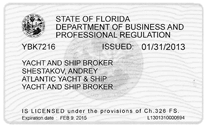Pearl 65 Luxury Motor Yacht Review
Posted 2016/09/19 at 18:45 in Yacht Reviews

Years ago, we thought of a triple-engine installation as luxurious and expensive with space-age engineering. We surmised who would purchase such a machine? But times have changed and many boaters are no longer satisfied with the midrange flying-bridge cruise that is merely 40 feet long with six berths, and a small third cabin. We now want something unusual and remarkable like the Pearl 65 – fitted with three engines on pod drives.
The fiberglass work is contracted out to Taiwan and then moved to England to be fitted and finished. The 65’s interior is designed by Kelly Hoppen, with European styling and naval architecture from the British design studio of Bill Dixon. The Pearl 65 aims high with its concepts and designs much like the Pearl 75 which was launched four years ago. You have the option of picking the two 900-horsepower Volvo Penta diesels on IPS drives or conventional shafts, over the standard three 600-horse power Cummins on Zeus pod drives.
Accommodations
Using pods, pushes the engines to the rear making space abundant in the hull. Three small marine diesels also free up space in the hull and reduce the burning of fuel per horsepower than when two bigger ones are used.
The main deck has a galley at the back which connects to the cockpit that gives the saloon setting area located midship more privacy. The long overhang serves dual functions; as a shield for the cockpit and a bridge space which houses the helm station. The lower deck layout is very clear and efficient. The 65 could have four cabins depending on how you choose to utilize that space to fit your needs.
Performance
On the water, she was very efficient and behaved like a professional with smooth movements and a top speed of 30.5 knots. Cruising speeds were comfortable, planing as low as 14 knots. Steering was very responsive, hard turns were done without stress and the triple installation performed well.
When starting while the center engine was off the 65 climbed to plane at a speed of 22 knots at full throttle even though the pod drive was dead and very heavy. Although the boat struggled with one engine dead, it still managed to climb onto plane and fuel burn was about 63 gallons per hour. With the removal of one of the outer engines, the boat was less happy, but still managed a maximum of 18 knots. At full speed with just the center engine running, 12 knots were achieved.
LOA: 60’4″
BEAM: 16’7″
DRAFT: 4’10”
DISPL: 74847LB
FUEL: 634 GAL
WATER: 158 GAL
TEST POWER: 2/725-HP Volvo Penta IPS950s
| RPM | KNOTS | GPH | RANGE | DBA |
|---|---|---|---|---|
| 1000 | 7.5 | 4.5 | 1268 | 57 |
| 1400 | 10 | 10.8 | 704 | 60 |
| 1800 | 12.4 | 26.1 | 361 | 62 |
| 2200 | 17.5 | 43.3 | 307 | 65 |
| 2400 | 20.5 | 50.5 | 309 | 69 |
| 2800 | 25.7 | 39.5 | 281 | 72 |
| 3080 | 30.5 | 93.5 | 248 | 74 |














